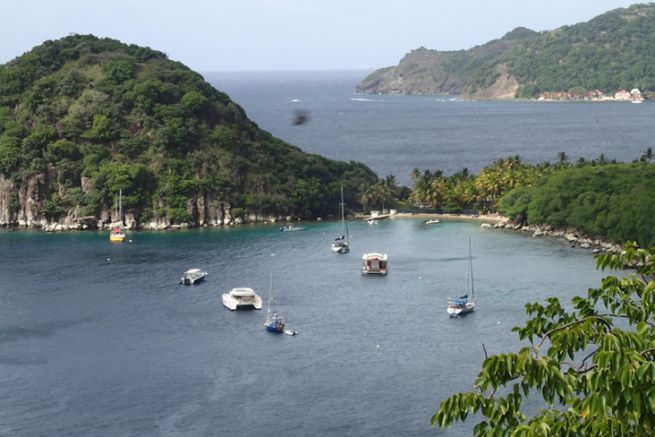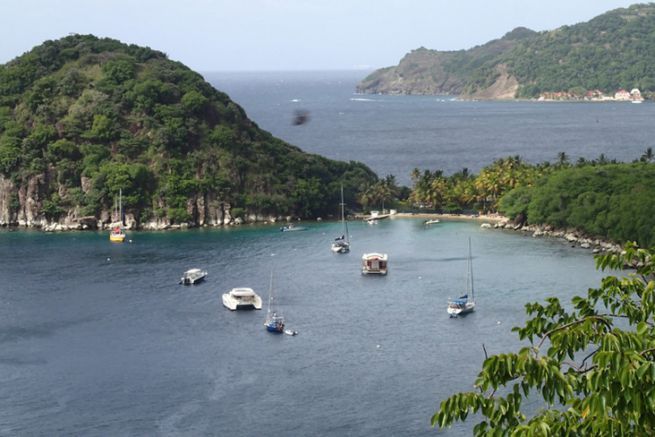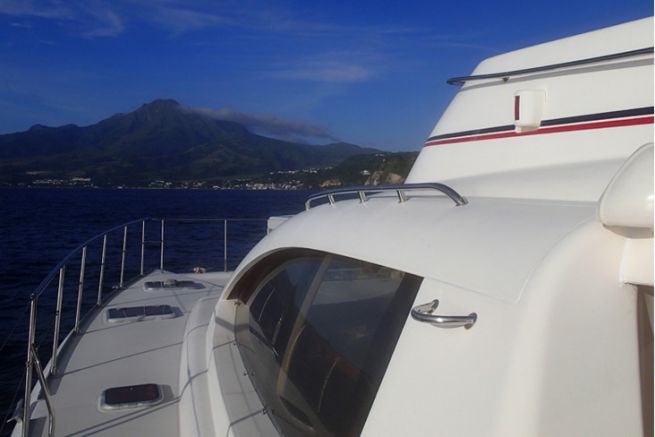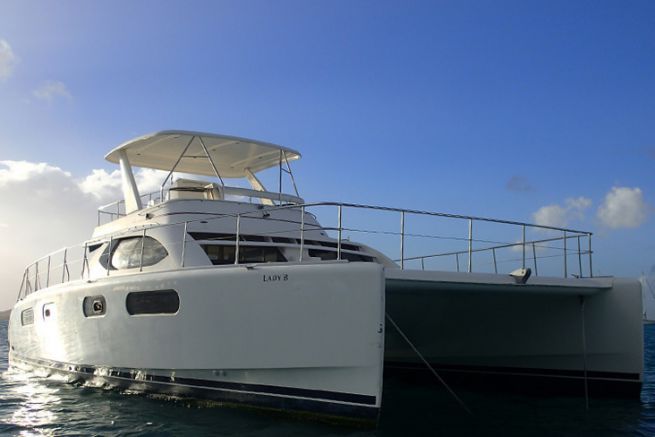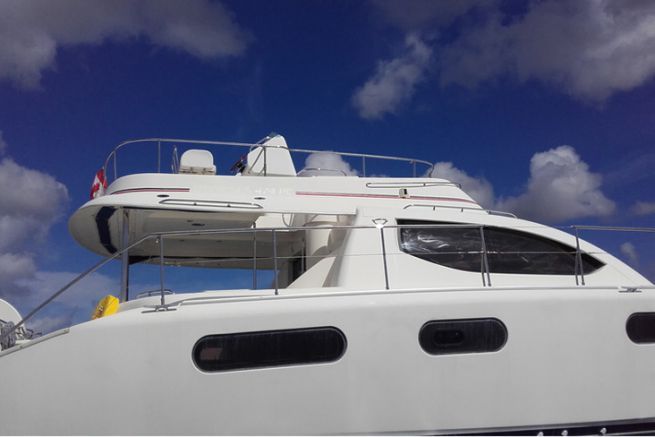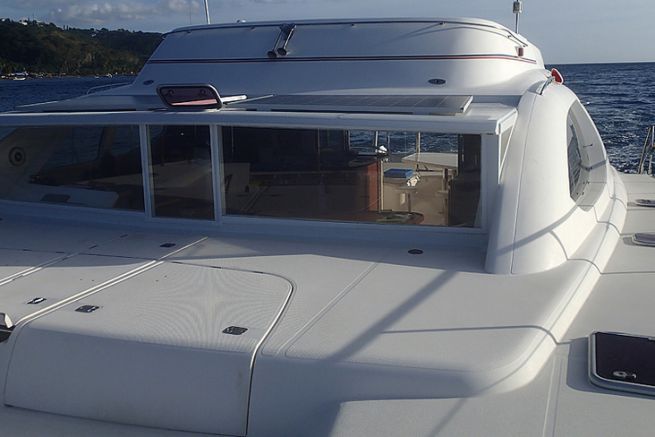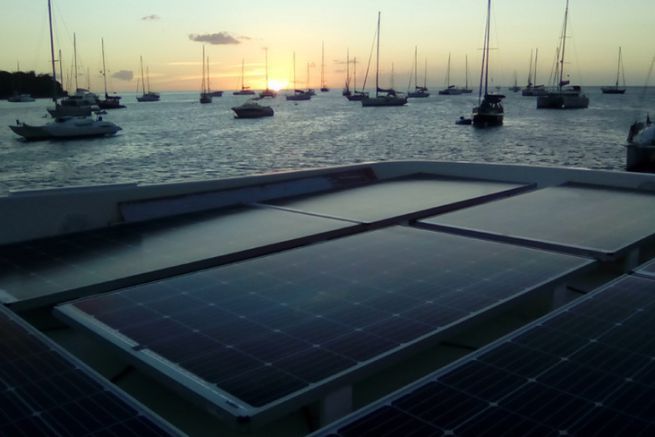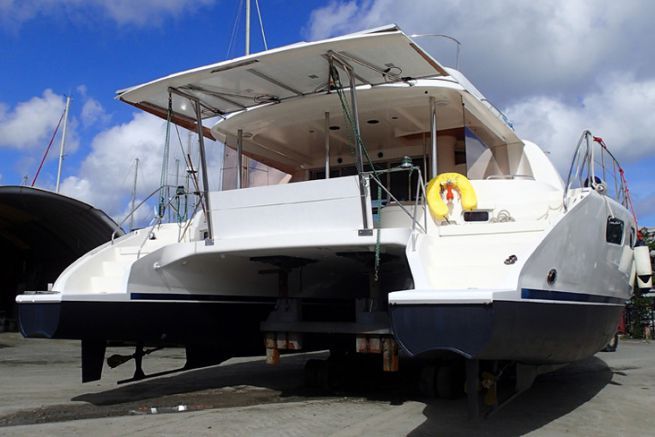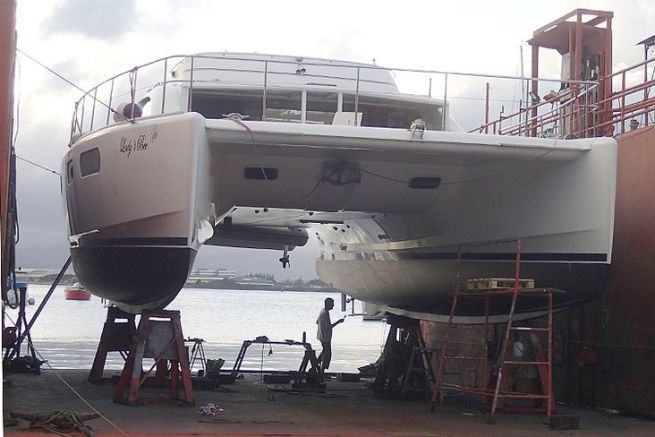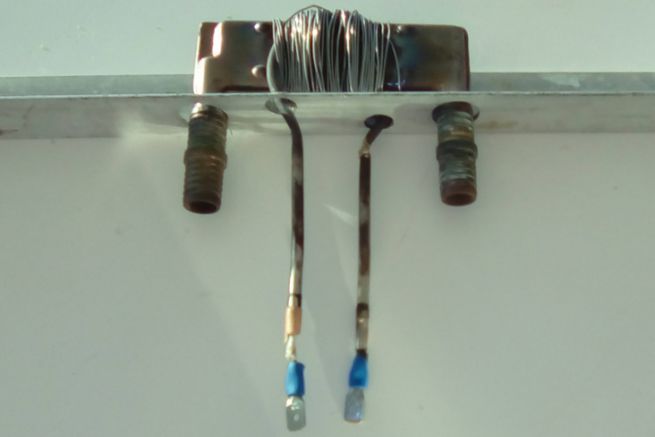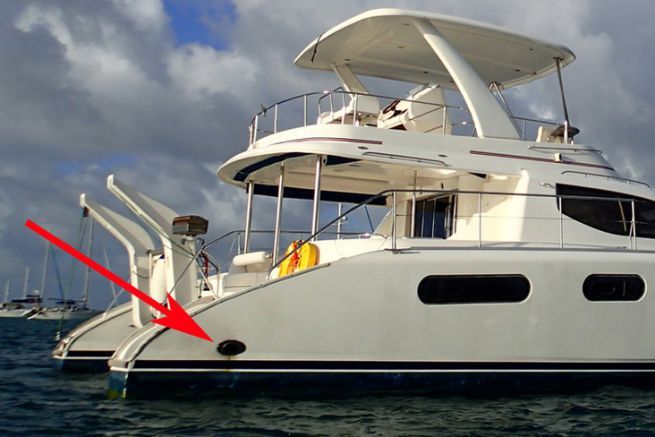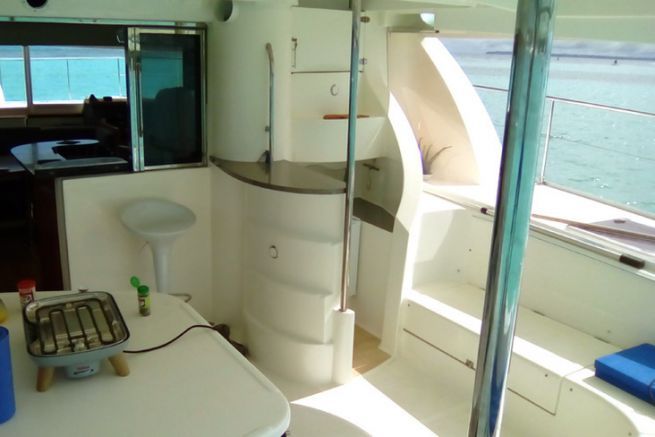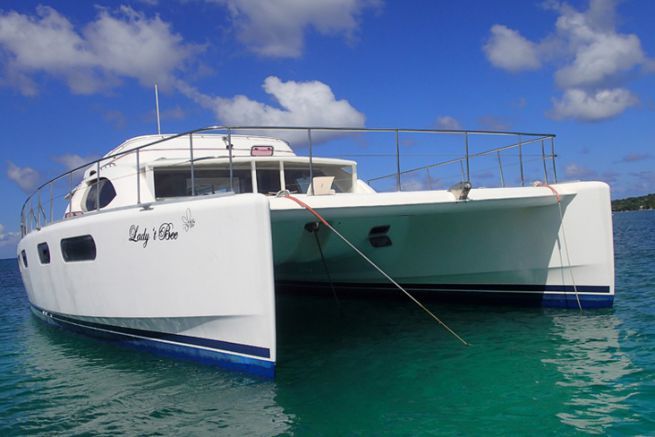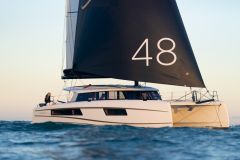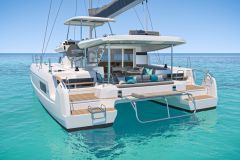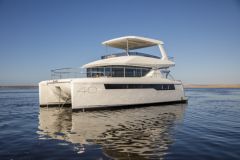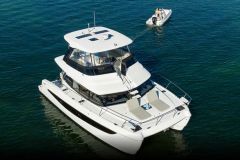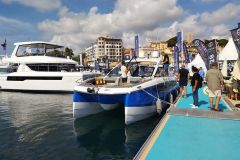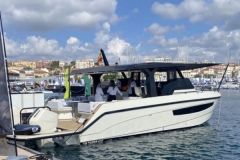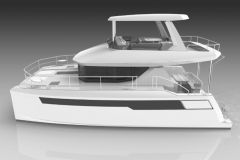Switching from sail to motor is not an easy process to explain. In his book "La belle et le bouchon gras", Dominique Montesinos shares with us the fruit of his reflection and the modifications he made to his new boat so that it meets his expectations.
In this first chapter, he explains to us why it is interesting to sail with a motor?
In a more pragmatic way, this book aims to provide some insights and answers to the question we have often heard lately, "Why doesn't your new boat have a mast?"
A short question short answer:
"Because a mast is a great source of inconvenience!"
"Possible, but a great source of satisfaction, especially!", retorted some of my exclusive sailing friends, before getting into their beautiful car to join their "sweet home"..
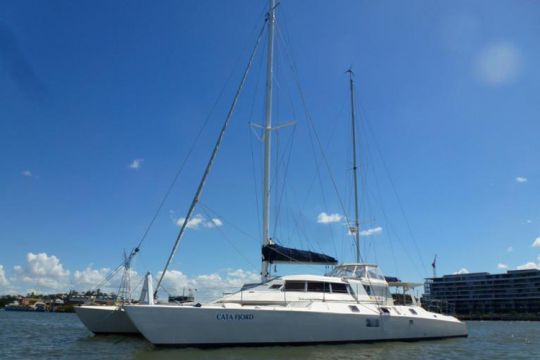
A boat to live
I made the choice to live on a boat a long time ago, because I don't like houses, and other land-based dwellings, with a few exceptions.
Two points, in particular, displease me in this way of life.
First of all, this obsessive sedentariness which leads them to remain frozen, stuck to the very place where they were erected. For the nomad that I am, this characteristic, that some appreciate, confers me a feeling of imprisonment little compatible with my thirst of freedom.
Secondly, since the hazards of genetics have given me the immense gift of being able to do things by hand, I am rarely reluctant to take care of improving this or that detail of our habitat.
Alas, along with this luck, I have developed a certain aversion to the materials commonly used in construction. Anything that is cement, brick, plaster, stones, honestly, "I don't like it". It's silly, I know, but I'm not going to pretend anything once I've clearly identified this weird characteristic that affects me.
As much as I enjoy working with wood, metals, resins and fibers, I am quite put off by stony conglomerates.
Riddle me this:
Among the following words, find the intruder: self-saw, welding machine, varlope, laminating roller, wheelbarrow..
In short, the habitat that suits me being mobile and preferably floating, it has always seemed to me that a trawler type boat could meet, in large part, these specifications
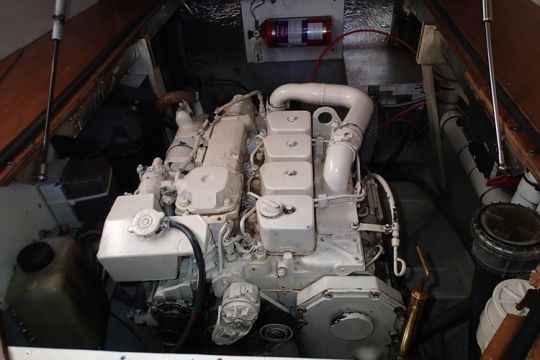
Sail or motor ?
There are many ways to move your floating home.
Two of them have occupied me a few thousand hours: the sail and the combustion engine. I won't talk about the electric motor, although I have a special affection for it, because I have only experimented it on dinghys... for the moment.
Together with my wife Malou, we have completed a seven-year journey around the world on a 64' sailing catamaran.
We came back with a great satisfaction to have realized this fantastic trip and the desire to continue to roam the seas, but with a boat a little less physical, a little easier to handle with two people, and less expensive to use.
We imagined it to be less than fifteen meters long and propelled solely by motors, without mast or sail.
And there you have it,
our current "boat, sweet boat" is a catamaran, without mast, driven by two strong diesel engines of brand "Cummins".
And we are happy to be free of the enormous constraint that constitutes - when we are not moving, that is to say 90% of the time - this huge pole that sometimes seems to have no other purpose than to poison its world, while methodically draining its bank account.

Why remove the mast
Explanation:
in a sailing catamaran, the most common sailing system is composed of a multitude of elements, each more expensive than the other. The mast itself, its shrouds, the sails and the numerous strings used to manipulate them, the fittings that allow these strings to be controlled (winches, carts, blockers...) and the structural reinforcements to ensure that all this remains in place for a while represent, on average, something like a quarter of the value of the boat!
Let's take the example of a mid-range production catamaran that is six years old and worth around 240,000 euros. Its lucky owners will have 90% of their time (the time during which they are at anchor or in the marina) to contemplate their sixty thousand euro patrimony (the mast and its accessories) depreciating inexorably above their heads in the greatest uselessness.
Why not, if they want to, but I think it's a high price to pay to be able to say: "I sail".
Worse, a raging squall in the middle of the night, as the tropics have the secret of doing, and the crew is sure to be awakened by the disturbing whistling of the wind in the rigging, as well as by the shrill squeaking of the bridle that connects the canoe to its anchor, which is suddenly stretched like the string of a thong between two callipyge curves

Sails to move a floating house?
The sailing catamaran in our example is equipped, as standard, with two diesel engines of moderate power. After about ten years of sailing, the set of sails as well as the complete rigging will have to be replaced, for a value of about three times the amount that would have been spent in fuel and various consumables if we had sailed only with the engine after having taken care to remove the mast.
But I feel the anger rumbling in the skulls of intrepid lovers of beautiful sailboats, stunned by my boldness and disappointed to see me thus denigrate what I have practiced so much.
Don't get me wrong, I want to be clear. Far be it from me to trample on today what I adulated yesterday.
The pleasure of running a sailboat by trimming it correctly and steering it with finesse and firmness always seems to me to be quite irreplaceable. My point is elsewhere.
I have the idea that moving your floating home is a different process; and that's what we're talking about.
As far as we are concerned, it is certain that moving your boat with motors, at the speed of a cruising sailboat, is much simpler and less expensive than doing it with a mast and sails.
In the next episode, the author explains why his motor catamaran is more ecological than a sailing model ?
